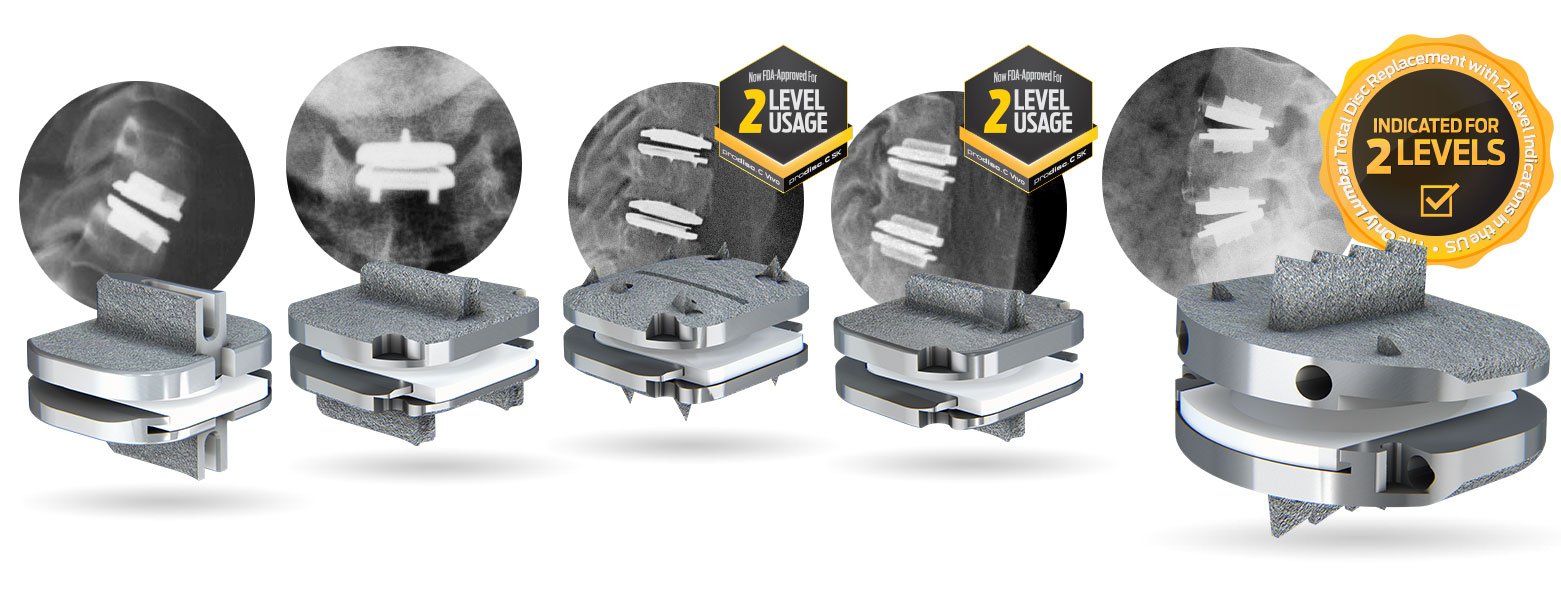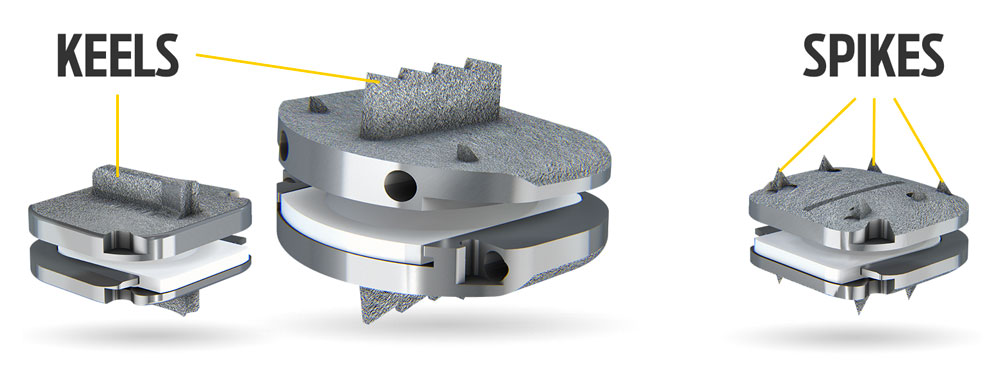MORE ABOUT prodisc
For more information about prodisc see our corporate website.
TO THE CORPORATE WEBSITE
1 Data on file at Centinel Spine compiled from Spine Solutions, Synthes Spine, DePuy Synthes, and Centinel Spine.
2 Search performed on Pubmed, Embase, Ovid Medline® covering 1988 – 2024.
3 Based upon U.S. complaint handling units for prodisc since launch in 2006.
4 Janssen ME, et al, ProDisc-C Total Disc Replacement Versus ACDF for Single-Level Symptomatic Cervical Disc Disease, JBJS, 2015, 97:1738-47.
5 Zigler, J, Delamarter R, Five-year results of the prospective, randomized, multicenter, Food and Drug Administration investigational device exemption study of the prodisc L total disc replacement versus circumferential arthrodesis for the treatment of single-level degenerative disc disease, J Neurosurg Spine, 2012, 17:493-501.
6 Crawford NR, et al, Biomechanics of a Fixed-Center of Rotation Cervical Intervertebral Disc Prosthesis, Int J Spine Surg. 2012; 6: 34–42.
7 Tumialan, L.M., et al., Arthroplasty in the military: a preliminary experience with prodisc C and prodisc L. Neurosurgical focus, 2010. 28(5): p. E18.




















